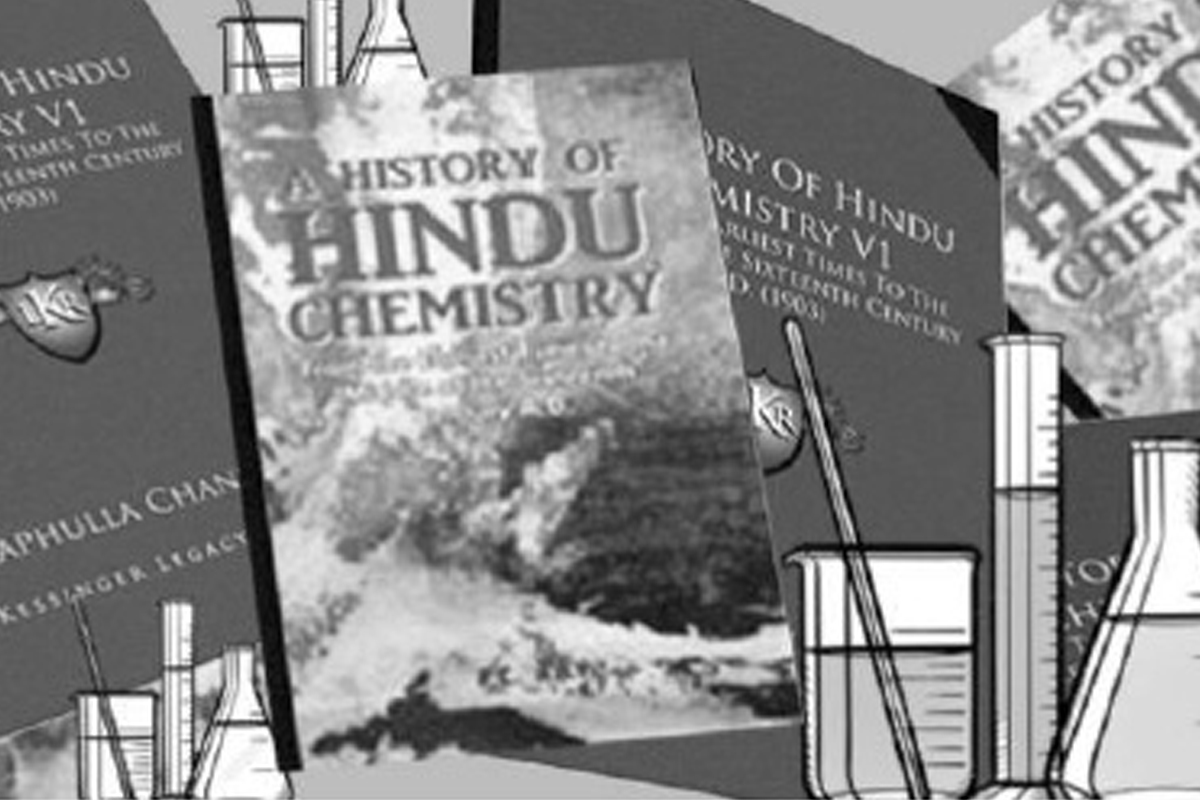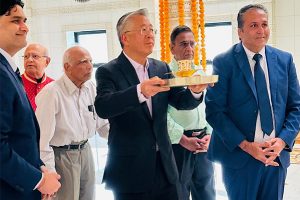Padmaja Naidu once observed: ‘Acharya Prafulla Chandra Ray needs no introduction by way of words of praise. The nobility, simplicity and forcefulness of his character, his indomitable courage and patriotism and, above all, his dedication to the eradication of social and economic evils have always been a source of inspiration to our people.
Whether as a scientist who laid the foundation for the advance of Chemistry in India or as educationist, social reformer or promoter of industry, Acharya Ray was a pioneer who has left his impact in every sphere he entered.’ Dr Armstrong made a few points about Acharya Ray’s literary abilities which we must make again and make with greater force at a time when such abilities are normally considered irrelevant in a scientist.
Armstrong said that “of distinguished literary percentage, his own early English training was literary in a way unknown even to Englishmen.” He added: “Not a few English chemists have had an early so-called classical training in Latin and Greek. I do not know of one who also had an English training such as Ray enjoyed. He writes perfect English. What is striking in him is the completeness and breadth of his modern outlook, as opposed to the confined, purely classical, retrograde outlook of so many English literary scholars: we may learn a valuable lesson from him in this respect.”
Acharya Ray loved his students as if they were his own sons. He frequently uttered the Sanskrit slogan which meant: “Wish for victory everywhere except from your son and from your disciple.” He really meant it. As Rabindranath Tagore said, Dr. Ray exemplified in himself the Vedic dictum “One shall be many.” He was intolerant of the caste system and those traditions which had brought India to a pitiable state of stagnation and slavery. He thought that the emancipation of the Indian mind could alone produce the atmosphere for the successful scientific advance of this country.
He literally spent himself in all these relentless activities which had patriotism as their central pivot. Acharya Prafulla Chandra Ray’s book, A History of Hindu Chemistry defies a summary. The father of modern chemistry in India had explored an unknown world of science hundreds of years ago. The tome bears testimony to the fact that knowledge of chemistry reached a high level of perfection in ancient India. The first volume of the book was published in 1902, and the second in 1909.
Both volumes were highly applauded by scientists. The title didn’t go through reprints after 1948 and so those interested in knowing what our ancestors discovered in chemistry lamented the nonavailability of the book. This monumental work of Prof Ray has a history behind its completion. When he was a student at the University of Edinburgh during the end of the 19th century he was fascinated by how much the ancients in the western hemisphere knew about chemistry.
Young Ray became curious to know where Indians stood in this regard. He studied in detail the works of Charaka, Susruta and various standard texts of Ayurveda which escaped the ravages of time. French scientist Marcellin Berthelot’s Alchemists Greece influenced him to write a letter to him, mentioning India’s contribution in alchemy and its significance. Berthelot, while admiring Ray’s views, made a personal request to provide him more information about ancient Hindu chemistry.
In 1888, Ray submitted to Berthelot a monograph on Indian alchemy, based chiefly on Rasendrasara Samgraha. Berthelot reviewed the interesting article in the journal, Des Serants, and presented Ray three volumes of his encyclopaedic works of Syrian and Arabian alchemy. Ray was thus inspired to write A History of Hindu Chemistry, incorporating among others, the alchemical ideas described in the Vedas and the works of Charaka, Susruta and the Bhagbhata.
He discussed the chemistry in the Siddha Yog and of Vrinda and Chakrapani, the entire tantric period ~ Rasaratnasamuchchayya and much else. Pandit Nabakanta Kavibhusana collated the Sanskrit texts. The publication was rather surprising, in that it revealed that ancient Hindu scientists and philosophers had a remarkable insight into the nature of matter although they lacked sophisticated laboratory equipment and techniques to acquire that advanced a level of knowledge. The second volume of the title, dedicated to the memory of Berthelot, was also a treasure trove.
It described the works of Nagarjua and various Buddhist alchemical texts. The indigenous origin of Indian alchemy and the contribution of some noted alchemists were also extensively described in it. Going through it, any reader would be left with the impression that ancient Hindu chemistry was in some respects more developed than even Greek science. The physical and chemical theories of the ancient experts, discussed by Prof BN Seal, were an added attraction of the volume.
The book is not merely a history of science in different periods of India, but also a succinct and quintessential analysis of the reason for decadence of the scientific spirit in this country. Our nation has a splendid past and this should make our young generation feel proud of it. The world has come a long way from the era of alchemy. We have entered a brave new world of chemistry, particularly after the completion of the Human Genome Project. “A new and interesting chapter has been added to the history of sciences and human progress, a chapter particularly useful for the recognition of reciprocal intellectual relation that has existed between the civilization of the East and the West.”
Sir Henry E. Roscoe, a great English chemist of the age, observed after reading the book: “I consider that the work is a most interesting and valuable contribution to chemical history, and exhibits an amount of learning and research which does the author the greatest credit”. During my post-graduate course in chemistry at Presidency College, Calcutta, in the early 1960s, I curiously watched the research equipment of Sir P C Ray and a wall plaque with a statue of the great scientist, in the main gate of laboratory on the ground floor. I remember my frequent lament: why wasn’t I born at that time to come close to this great renaissance personality, could not bow at his feet for blessings and embrace his affection to the core of my heart?
(Concluded)
(The writer, a former Reader in Chemistry at Presidency College, Kolkata, was associated with UGC and UNICEF)











